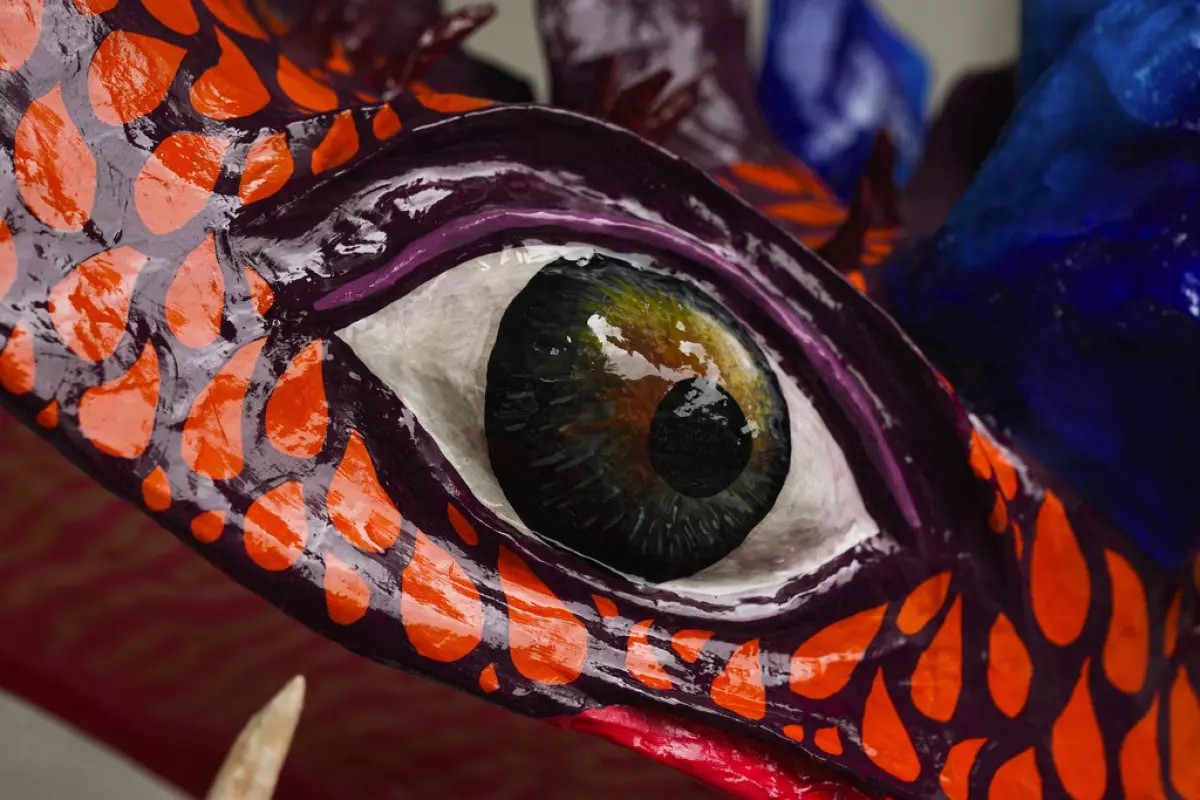Despite the threat of a persistent drizzle, a man protected only by a straw hat slides his brush with a garish green on the tail of a giant figure with the head of an iguana and the body of a lizard that occupies almost the entire terrace of a house located in a popular neighborhood south of the Mexican capital.
Israel Mondragón squeezes the most out of the hours of the day to finish his surrealist work, more than two meters high, which will be part of the 200 large-scale pieces that will be exhibited on Saturday in the streets of downtown Mexico City during the fifteenth edition of the “Night of the Alebrijes” parade.
The alebrije, which is made of paper or cardboard and has a wire structure, is one of the expressions of Mexican folk art that in recent years has become popular thanks to blockbuster movies such as Coco, which have helped spread outside Mexico’s borders the colorful creations that usually combine figures of different animals in a single body.
For more than a decade, the Museum of Popular Art and other local instances have contributed to propagate the artistic branch of the “cartoneros” or “alebrijeros”, as the artisans who make alebrijes are usually called, which emerged last century in the Mexican capital, but have expanded throughout the country.
In some regions such as the southern state of Oaxaca, smaller alebrijes are made with copal wood, which is decorated with motifs from the mythology of the Mesoamerican Zapotec civilization that refers to humans being born accompanied by an animal that guides them during their lives.
It is not clear how it began, but specialists identify as its precursor Pedro Linares López, a cartonero from Mexico City, who around 1936 began to make the first alebrijes, a tradition that has been continued to this day by his children and grandchildren.
The first parade in honor of these figures was held in 2007, but they have also been maintained uninterruptedly at the Museum of Popular Art for fifteen years, said Emilio Ortiz, coordinator of social communication of the artistic center.

“The parade allows the artisans to pour all their creativity, all their ingenuity into making these pieces. It is a way to promote their work, as well as to preserve the cartonería,” Ortiz told The Associated Press, acknowledging that the event represents a very important showcase for the artisans, which has even served as a springboard for them to take their works to France, Belgium and the United States.
Despite having participated for fourteen consecutive years in the unique parade, which inaugurates the season of celebrations for the Day of the Dead in the Mexican capital, Mondragon lets out a big smile when talking about the expectations he has to see his work enter the Zocalo, the main square, and walk the streets of his hometown under the watchful eyes of hundreds of spectators.
“It’s a great emotion,” said the 37-year-old artisan, who hopes that the energy of that moment will help him put aside the fatigue generated by the 16 hours a day he has worked over the last month to finish on time the “Señor Travieso”, a piece that shows a surreal iguana walking on two legs while carrying a cake with his left hand and walking three dogs.
Although at first glance the figure of a fantastic animal is distinguishable, Mondragón – who has spent almost half his life dedicated to cardboard making – prefers to identify his work as an “alebrije that has a bit of an iguana’s head, but at the same time is a transformed person.”
“We make animals that don’t think they are just monsters… This alebrije is walking his dogs, he is more humanized, and he is aware that he has to take care of the cake,” said the artist when explaining that when he came up with the design of his work a year ago he wanted to give it a social purpose to promote among viewers the adoption of stray dogs and cats. A few years ago he rescued three dogs from the street that now live with him, whom he decided to honor by transforming them into alebrijes.

The perception that each creator has of life and his environment and an unlimited imagination seem to be the marks that have accompanied the Mexican “alebrijeros” since their origins, said Ortiz, recognizing that these conditions make each piece unique and unrepeatable.
Mondragón is well aware of that. As he puts the last brushstrokes on the tail of “Señor Travieso”, the artist confesses that he hopes his alebrije will have “its own life, its own dynamics, its own way of behaving”.
TYT Newsroom




1 comment
There are scammers around, but don’t panic; not everyone is dishonest. This website is really reliable and prosperous. It is greatly benefiting a lot of individuals. Visit the website for additional details and to sd-10 sign up for free without using any urgent funds.
.
.
Detail Here——————————->>>https://careershome123.blogspot.com/